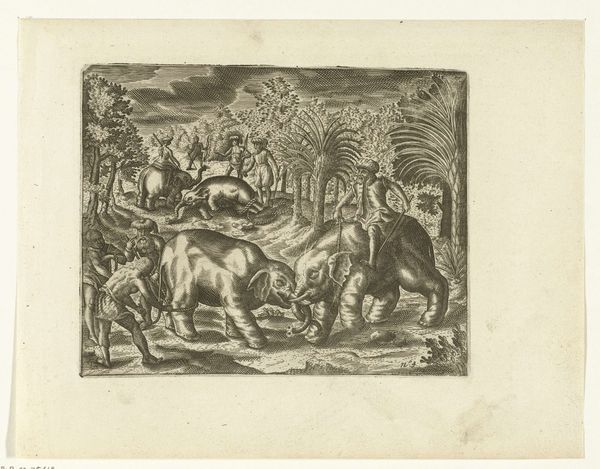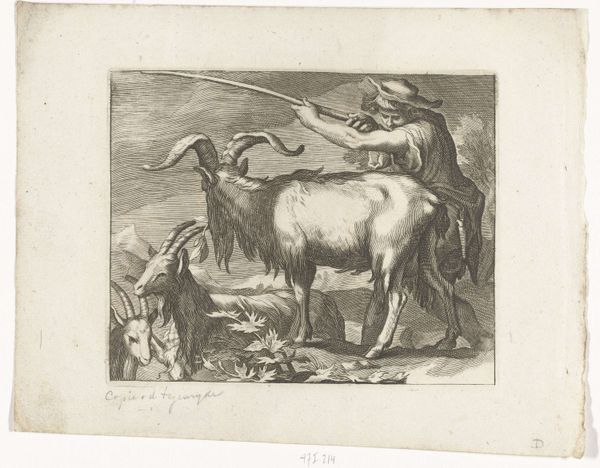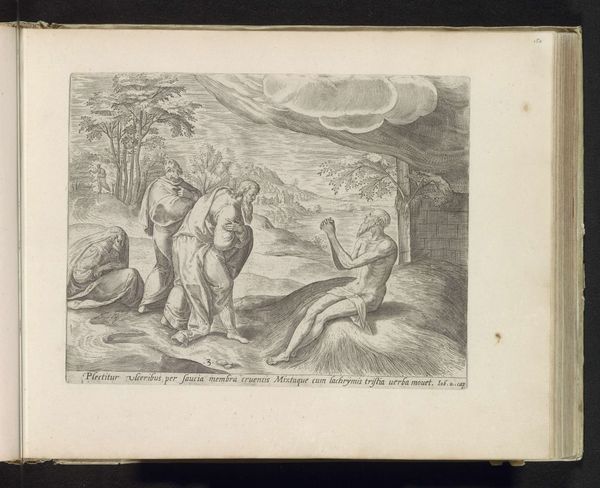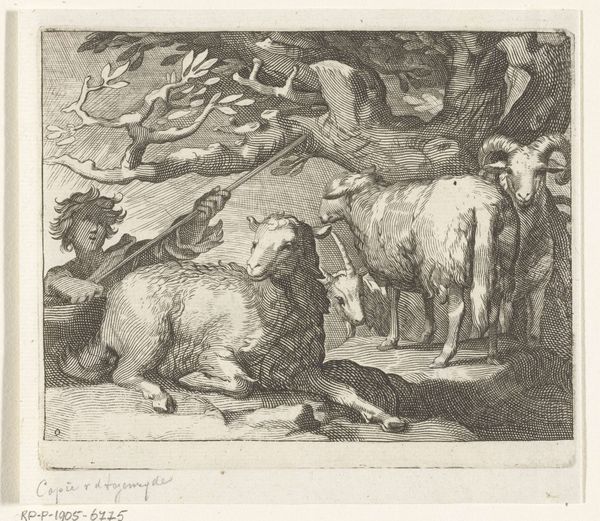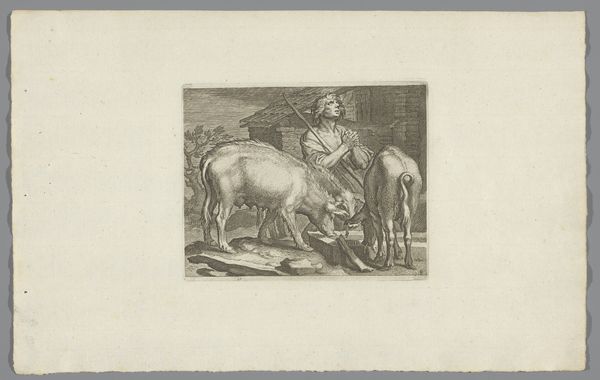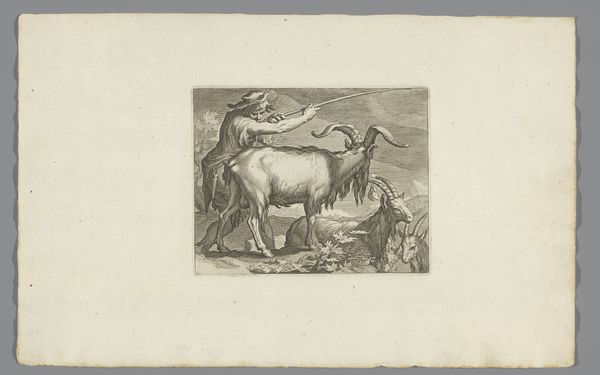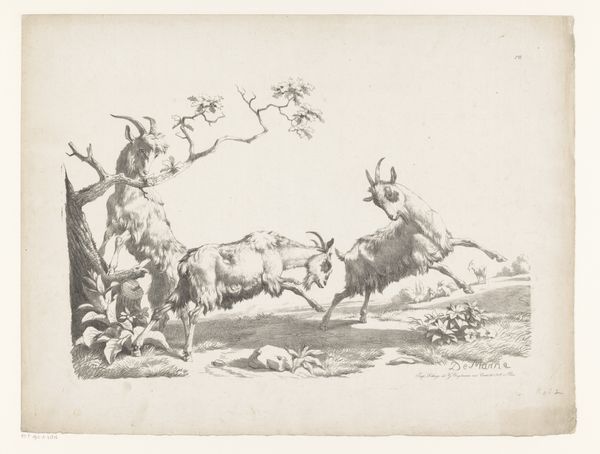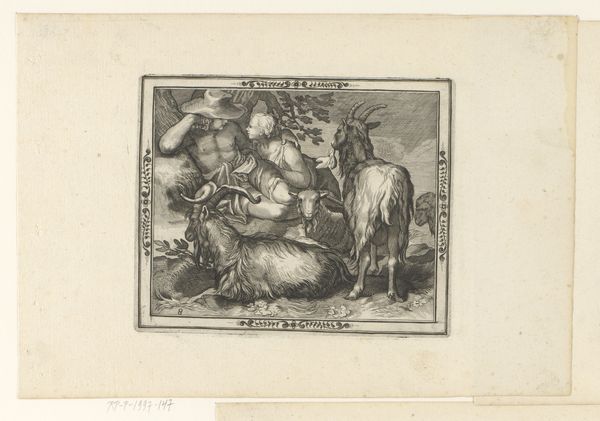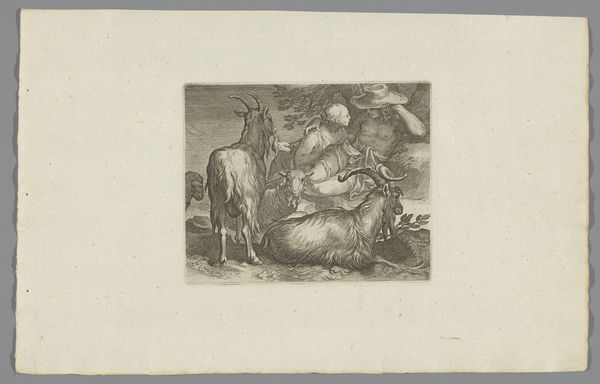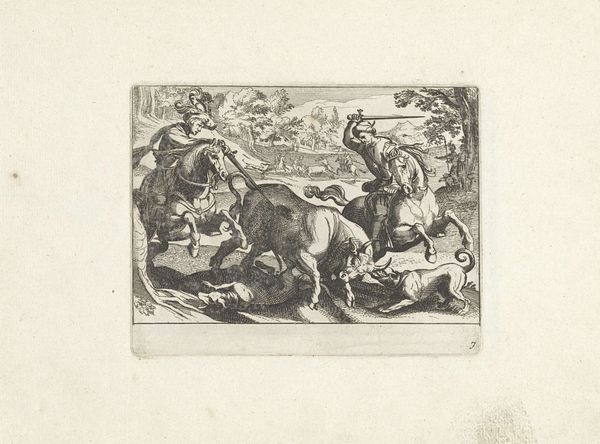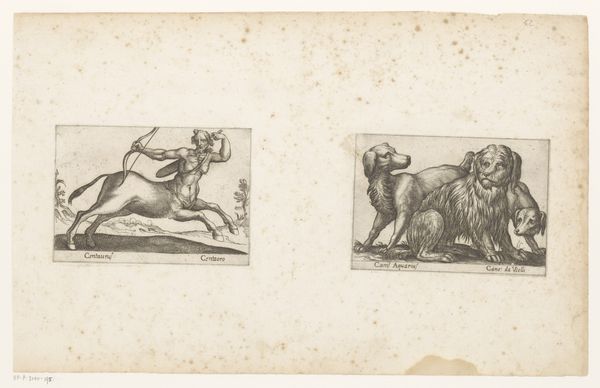
drawing, ink
#
drawing
#
dutch-golden-age
#
landscape
#
figuration
#
ink
#
genre-painting
#
watercolor
Dimensions: height 243 mm, width 360 mm
Copyright: Rijks Museum: Open Domain
Curator: This ink drawing, "Verloren Zoon en Boerenerf met Gevogelte" by Moses ter Borch, likely created around 1660-1661, immediately strikes me with its compartmentalized composition. Two distinct scenes, almost like diptych panels. Editor: It certainly feels bifurcated, visually. I’m immediately drawn to the almost melancholic stillness of the piece. The muted palette and the subjects themselves seem weighed down, reflecting perhaps, societal burdens. Curator: Consider the linear quality inherent in the ink medium; Ter Borch uses these fine lines to meticulously construct form and spatial relationships within each panel. Notice the detailing in the rendering of the animals. It’s an acute study of farm life, presented as two individual iconographic panels of distinct themes—human narrative versus animal husbandry. Editor: Absolutely, but the "human narrative" seems inextricably tied to agricultural labour and life in 17th-century Netherlands. There's an element of class commentary here. Note how the artist positions the labourer beside barnyard animals. Is this a reflection on societal hierarchy, or just documenting everyday rural existence? Curator: It's an exercise in controlled chaos; he orchestrates seemingly disparate subjects and scenes. On the left, the livestock and farmer, while on the right a tableau of domestic birds—chickens, turkeys, and perhaps other fowl are set amongst everyday domestic paraphernalia. Look closely and the composition uses a near symmetrical treatment to anchor visual interest. Editor: And how these scenes implicitly highlight economic realities of the time—agriculture, trade, and animal wealth shaped everyday lives. Even the prodigal son narrative likely carries commentary related to family fortunes being squandered. Curator: It also seems as though Ter Borch sought to create both order and balance via these thematic arrangements; he sought symmetry from contrasting forms that complement each other aesthetically to create aesthetic completeness. Editor: Yet the unromantic rendering points towards a starkness of that agricultural life; there's little joy conveyed, more a somber acknowledgment of daily grind that intersects human fate. That connection between labourer and livestock feels especially critical when viewing these pieces within socio-economic realities. Curator: Ter Borch invites a deeper formal inquiry through a dualistic composition of farm life vignettes. I'd argue he masterfully employs linear economy. Editor: For me it offers insight into the often unacknowledged struggles of those outside positions of societal power, an important historical snapshot even within intimate domestic sphere representations.
Comments
No comments
Be the first to comment and join the conversation on the ultimate creative platform.
